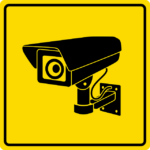
Image by Ronny Overhate from Pixabay
By Emma Sturgis
Ensuring the security of your organization is a top priority in today’s digital age. With cyber threats constantly evolving, it’s essential to conduct regular security assessments to identify vulnerabilities and mitigate risks. In this blog post, we’ll provide a comprehensive guide on how to conduct a thorough security assessment for your organization, from identifying assets to performing risk analysis and implementing security controls. By following these steps, you can strengthen your organization’s defenses and protect sensitive information from potential threats.
Identify assets
The first step in conducting a security assessment is to identify all the assets within your organization. This includes hardware such as servers, computers, and mobile devices, as well as software applications and data repositories. Create an inventory of all assets and classify them based on their importance and sensitivity. This will help you prioritize your security efforts and focus on protecting the most critical assets.
Perform vulnerability scans
Once you have identified your assets, it’s important to perform vulnerability scans to identify potential weaknesses in your network and systems. Use automated tools to scan for known vulnerabilities and misconfigurations that could be exploited by attackers. Regular scans will help you stay ahead of emerging threats and ensure that your organization’s security posture is up to date.
Conduct risk analysis
After identifying vulnerabilities, it’s crucial to conduct a risk analysis to evaluate the potential impact of these vulnerabilities on your organization. Determine the likelihood of a security breach occurring and the potential consequences in terms of financial loss, reputational damage, and regulatory fines. This will help you prioritize remediation efforts and allocate resources effectively to address the most critical risks.
Implement security controls
Based on the results of your risk analysis, it’s time to implement security controls to mitigate the identified risks. This may include implementing firewalls, antivirus software, encryption, and access control mechanisms to protect your assets from unauthorized access and ensure data confidentiality and integrity. Regularly monitor and update these security controls to adapt to evolving threats and maintain a strong security posture.
Regularly review and update
Security assessments are not a one-time activity but an ongoing process that requires regular review and updates. Schedule regular security assessments to identify new vulnerabilities and assess the effectiveness of your security controls. Stay informed about the latest security trends and technologies to continuously improve your organization’s defenses and stay ahead of potential threats.
In conclusion, conducting a thorough security assessment is essential for protecting your organization from cyber threats and maintaining a strong security posture. By following the steps outlined in this blog post, you can identify vulnerabilities, assess risks, and implement security controls to strengthen your defenses and safeguard sensitive information. Remember, security is a continuous process, so be proactive in regularly reviewing and updating your security measures to stay ahead of potential threats. By prioritizing security and investing in regular assessments, you can ensure the safety and security of your organization in today’s dynamic threat landscape.
_______
Emma Sturgis is a freelance writer based out of Boston, MA. She writes most often on health and education. When not writing, she enjoys reading and watching film noir. Say hi on Twitter @EmmaSturgis2.
